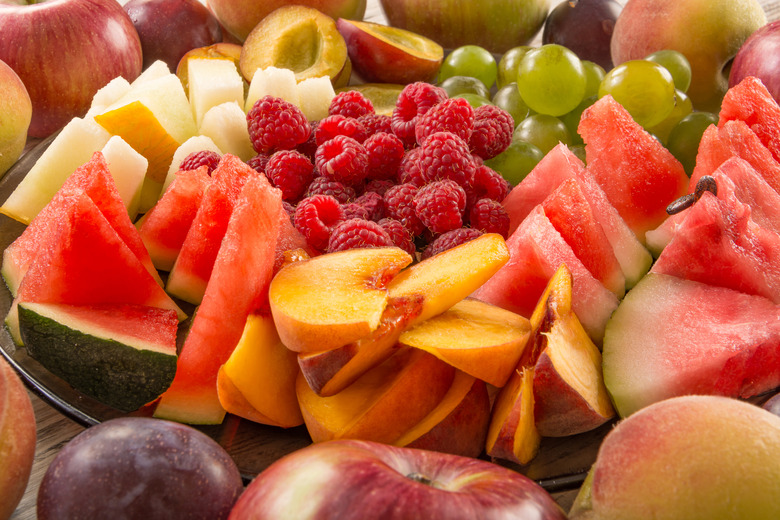Fruit Themed Science Activities
The bright colors and sweet tastes of fruit appeal to young children but fruit themed science activities give them a reason to play with their food that even mom will approve of. Children can explore fruit seeds, the properties and function of the skin, conduct a taste test or experiment with how to keep fruit fresh. The payoff for fruit science activities is that once the experiment is over, the children can have a yummy and nutritious snack.
Plant Seeds
Plant Seeds
Cut open watermelon or apple seeds to explore seed parts. Give each child a seed to plant in a small container. Keep a few extra on the side for demonstration purposes in examining root growth. Once the seed sprouts, keep a picture journal of its daily growth until you are ready to send the plants home to be transplanted.
Floating Fruit
Floating Fruit
Do Science suggests trying to float lemons or oranges in a container of water to test buoyancy. Try it unpeeled and peeled. Then try to float a piece of the skin to discover that the lightness of the air-filled peel is what makes the difference between floating and sinking fruit.
Fresh vs. Dried Fruit
Fresh vs. Dried Fruit
Peel and remove seeds from apricots, apples, pears, peaches, apricots, grapes, plums or berries. Let the children help prepare the fruit for drying under adult supervision. They can use dinner knives or plastic ware to cut the fruit into small bite-size pieces. Soak the fruit in lemon juice for a few minutes. Spread a single layer of fruit on a cookie sheet and place it in an oven or dehydrator at 125 to 150 degrees for eight to 24 hours depending on fruit type. Preschool Rock suggests holding a taste test the next day with samples of the dried fruit and the corresponding fresh fruit. Ask the children to identify the difference between dried and fresh fruit. Discuss which fruits they like best and whether they prefer the dried or fresh version.
Fruit Oxidation
Fruit Oxidation
Leave some banana, apple, strawberry and kiwi slices out for 30 to 60 minutes and have the children observe the brownish color that develops. Explain that the chemicals in the fruit react with the air causing oxidation which turns the fruit brown. To slow this process and preserve the fruit, experiment with different preservatives. Prepare three plates using a variety of fruits in each sample. Sprinkle one with sugar; soak another in lemon juice and the last one in water. Predict what will happen to each fruit sample and observe the results after 30 to 60 minutes. Discuss which preservative produced the best results.
Cite This Article
MLA
Hooser, Tamara Christine Van. "Fruit Themed Science Activities" sciencing.com, https://www.sciencing.com/fruit-themed-science-activities-7953916/. 22 November 2019.
APA
Hooser, Tamara Christine Van. (2019, November 22). Fruit Themed Science Activities. sciencing.com. Retrieved from https://www.sciencing.com/fruit-themed-science-activities-7953916/
Chicago
Hooser, Tamara Christine Van. Fruit Themed Science Activities last modified August 30, 2022. https://www.sciencing.com/fruit-themed-science-activities-7953916/
